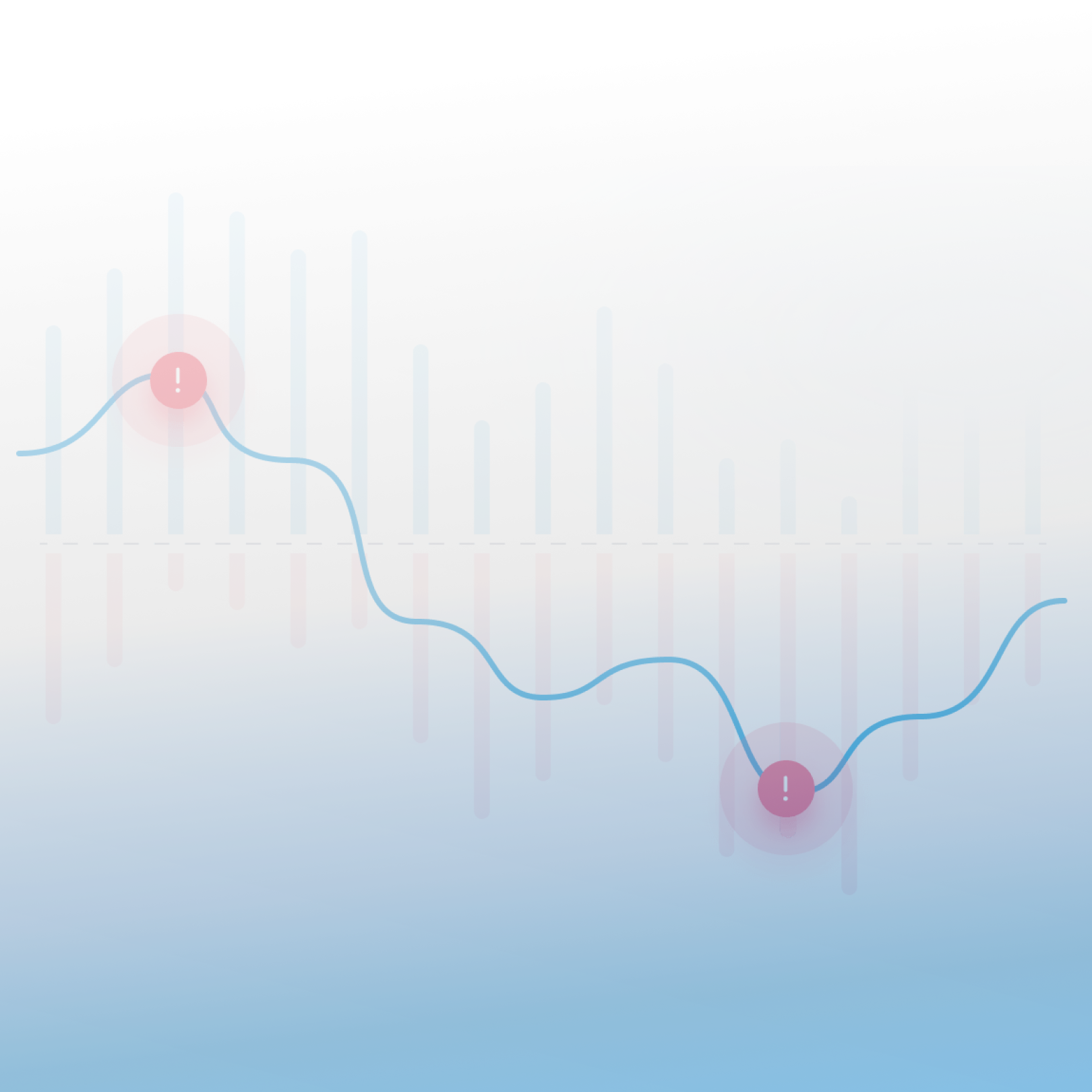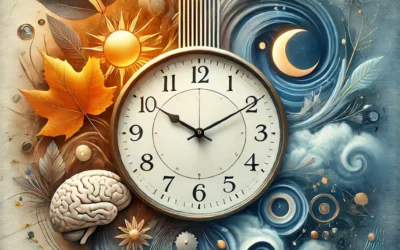Störungen der zirkadianen Rhythmen und insbesondere die Entwicklung und das Auftreten von Schlafabweichungen sind eines der Hauptsymptome bei Patienten mit bipolarer Störung. Daher haben sich zahlreiche Studien, die sich mit dieser Krankheit befassen, auf Möglichkeiten zur Messung von Schlaf und Aktivität konzentriert [1].
Die Erfassung und Diagnose von Anomalien des zirkadianen Systems, zu dem auch die Schlafregelmäßigkeit gehört, kann mit verschiedenen Methoden erfolgen. Die Methoden lassen sich in subjektive und objektive Methoden unterteilen. Beispiele für subjektive Methoden der Schlaferfassung sind ein anamnestisches Gespräch mit einem Facharzt, die kontinuierliche Erfassung des Schlafverhaltens (Schlafenszeit, Einschlafen, nächtliches Aufwachen) oder die subjektiv empfundene Ruherate, die mithilfe eines Schlaftagebuchs erfasst wird. Diese Methoden können jedoch durch die Fähigkeit des Patienten, die interessierenden Variablen genau zu erfassen, verzerrt werden und scheinen eher geeignet zu sein, Schlafpräferenzen, d. h. Chronotypen, zu ermitteln, als die tatsächlichen Schlafmuster und die Funktionsweise des zirkadianen Systems zu bestimmen [2] [3].
Andererseits gibt es objektive Methoden zur Messung von Schlafparametern bei Patienten mit bipolarer Störung. Das erste Beispiel ist die Polysomnographie, eine umfassende Schlafuntersuchung, die in der Regel in Schlaflabors durchgeführt wird. Mit der Polysomnographie kann eine Vielzahl von physiologischen Funktionen aufgezeichnet werden, um Schlafstörungen und zirkadiane Störungen zu diagnostizieren.
Eine weitere weit verbreitete objektive Methode ist die Aktigraphie, bei der die Bewegung 24 Stunden lang mit einem Aktigraphen aufgezeichnet wird. Ein Aktigraph ist ein tragbares Gerät mit einem Sensor (einem Beschleunigungsmesser), in der Regel in Form eines kleinen Armbands, das die Körperbewegung in drei Achsen aufzeichnet. Er misst die Frequenz, die Beschleunigung und die Richtung der Bewegung. Die Bewegungsaufzeichnungen können dann aus der Vielzahl der gewonnenen Parameter in aktive Bewegungen während des Tages oder als Schlafaktivität differenziert werden [3] [4].
Messungen mittels Polysomnographie und Aktigraphie scheinen vergleichbar zu sein und die Ergebnisse der Aufzeichnungen stimmen in bis zu 90% überein [5] [6].
Somit kann die Aktigraphie als einfache, objektive Methode zur Messung von Schlaf- und Bewegungsmustern in einer natürlichen Umgebung betrachtet werden, die das Risiko subjektiver Verzerrungen verringert und keine zusätzlichen Anforderungen an den Patienten stellt, die über das Tragen eines Aktigraphie-Sensors hinausgehen.
Forschungen, die sich auf aktigraphische Messungen bei Patienten mit bipolarer Störung konzentrieren, weisen auf sichtbare Unterschiede in den Bewegungsmustern im Vergleich zu Kontrollen oder zwischen den Krankheitsphasen hin.
Aus einer Literaturübersicht über den aktuellen Stand der Forschung können wir beispielsweise die Ergebnisse einer systematischen Übersichtsarbeit präsentieren, in der über signifikant niedrigere Gesamtraten der täglichen körperlichen Aktivität bei Patienten mit bipolarer Störung im Vergleich zu gesunden Kontrollpersonen berichtet wurde [7]. Andere Studien weisen auf Unterschiede in den individuellen aktigraphischen Aufzeichnungen in Abhängigkeit von der aktuellen Krankheitsphase hin, wobei die durchschnittliche Aktivität einer Person in einer manischen Episode höher ist als in einer depressiven Episode [8].
Die aktigraphische Aufzeichnung von Patienten mit bipolarer Störung kann sich auch von Patienten mit anderen psychiatrischen Störungen unterscheiden. Untersuchungen von Smagula und Kollegen ergaben retrospektiv erhöhte Unregelmäßigkeiten der Ruhe- oder Schlafaktivität innerhalb der hypomanischen oder manischen Phase bei Personen, bei denen ursprünglich eine Depression diagnostiziert wurde [9].
Die Aktigraphie hat ein großes Potenzial, körperliche Aktivität, Schlaf und Anomalien in der Funktion des zirkadianen Systems einfach und genau zu erfassen. Allerdings sind die analytische Verarbeitung und die Interpretation der gewonnenen Daten in dieser Hinsicht entscheidend [3].
Die Aktigraphie in der Psychiatrie bietet sich auch für den Einsatz in der klinischen Praxis an, nicht nur in der Forschung. Durch die Erfassung des individuellen Krankheitsverlaufs und die Identifizierung der Krankheitsphase können diagnostische Entscheidungen, die Festlegung einer angemessenen Behandlung und eine frühzeitige Intervention durch einen Spezialisten unterstützt werden.
Dieser Artikel fasst nicht nur den aktuellen Wissensstand auf dem Gebiet der aktigraphischen Messung in der Psychiatrie zusammen, sondern zeigt auch die Hauptgründe auf, warum wir den einzigartigen Wert des Mindpax-Systems sehen. Einerseits ermöglichen wir eine subjektive Aufzeichnung durch den Patienten, andererseits stützen wir uns auf objektive Daten und deren umfassende mathematische und statistische Analyse, um einen möglichst genauen personalisierten Überblick über die Entwicklung der Krankheit des Patienten zu erhalten.
[1] De Crescenzo, F., Economou, A., Sharpley, A. L., Gormez, A., & Quested, D. J. (2017). Actigraphic features of bipolar disorder: A systematic review and meta-analysis. Sleep Medicine Reviews, 33, 58-69. https://doi.org/10.1016/j.smrv.2016.05.003
[2]Chokroverty, S., & Ferini-Strambi, L. (Ed.). (2017). Oxford Lehrbuch der Schlafstörungen.
Oxford University Press.
[3] Murray, G., Gottlieb, J., Hidalgo, M. P., Etain, B., Ritter, P., Skene, D. J., Garbazza, C., Bullock, B., Merikangas, K., Zipunnikov, V., Shou, H., Gonzalez, R., Scott, J., Geoffroy, P. A., & Frey, B. N. (2020). Die Messung der zirkadianen Funktion bei bipolaren Störungen: Empirischer und konzeptioneller Überblick über physiologische, aktigrafische und Selbstbericht-Ansätze. Bipolar Disorders, 22(7), 693-710. https://doi.org/10.1111/bdi.12963
[4]Kaplan, K. A., Talbot, L. S., Gruber, J., & Harvey, A. G. (2012). Evaluierung des Schlafs bei bipolarer Störung: Vergleich zwischen Aktigraphie, Polysomnographie und Schlaftagebuch: Evaluating sleep in bipolar disorder. Bipolar Disorders, 14(8), 870-879. https://doi.org/10.1111/bdi.12021
[5]Mercer J, Bootzin R, Lack L. Insomniacs perception of
Wachen statt schlafen. Schlaf 2002; 25: 564-571.
[6]Mullaney D, Kripke D, Messin S. Handgelenk-Actigraphie
Schätzung der Schlafdauer. Schlaf 1980; 3: 83.
[7] De Crescenzo F, Economou A, Sharpley AL, Gormez A, Quested DJ. Aktigrafische Merkmale der bipolaren Störung: A systematic review and meta-analysis. Sleep Med Rev. 2017;33:58-69.
[8] Scott J, Murray G, Henry C, et al. Activation in Bipolar Disorders: A Systematic Review. JAMA Psychiatry. 2017;74(2):189-196.
[9]. Smagula SF, Krafty RT, Thayer JF, Buysse DJ, Hall MH. Ruhe-Aktivitäts-Rhythmusprofile im Zusammenhang mit manisch-hypomanen und depressiven Symptomen. J Psychiatr Res. 2018;102:238-244.



